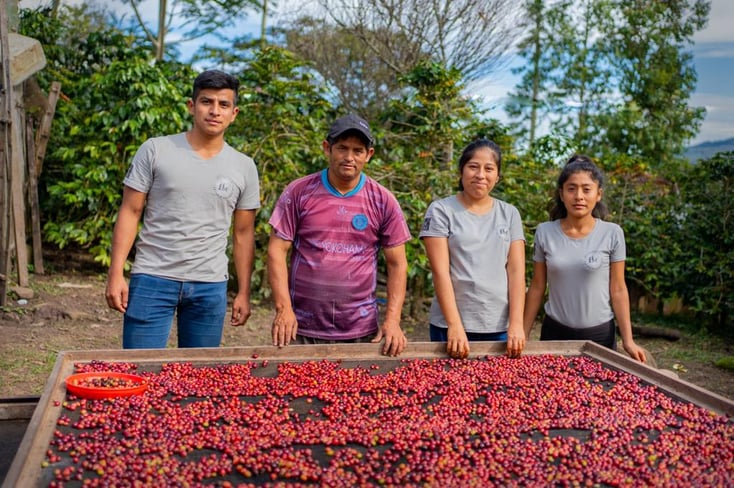
Peru, a hidden gem for many, continues making waves on the world's coffee scene, with its coffee being exported to over 50 countries and an annual export revenue of approximately US$750 million, making coffee a vital component of its economy.
The United States Department of Agriculture (USDA) predicts a two percent increase in production, totaling 4.03 million 60-kilogram bags for the 2022/2023 crop year. But how has the scene changed in recent years?
We contacted José Altamirano, an experienced coffee professional with more than 15 years working in the industry and Casil's manager since 2019. Then we have Omar García, a 23-year-old Alonso de Alvarado cooperative manager who is making his way through the industry. Both have endured different challenges and have two valuable perspectives on the Peruvian coffee industry and its current state.
Join us and these two cooperative managers as we explore the journey of Peruvian coffee with them and learn about the challenges they've faced and overcome in the past couple of years!
________________________________________________
Evolution and Changes in the Peruvian Coffee Industry
Casil, a cooperative in San Ignacio, was founded 57 years ago out of an idea from a group of friends – coffee growers – who got together to discuss all things coffee and how to improve their coffee. During that time, in the mid-60s, there was only one buyer in the region of San Ignacio, so everyone used to sell their coffee to that one buyer. Still, this group needed to expand their sales and started a cooperative, which they named Cooperativa Agraria San Ignacio de Loyola (CASIL).
Today, only one of the founding members lives, and the third and fourth generation of these families now takes care of the cooperative and its members, with José Altamirano at the helm.
Coffee farming in Peru has suffered many changes. José tells us that previously, people only separated coffee by physical aspect, yield, and color. People didn't understand why they needed coffee tasters; there wasn't much technology in coffee roasting labs, and sample roasters were so basic that they didn't even have air extractors or temperature gauges, let alone thermostats. José tells us that they used to put their hands over the roaster after 10 minutes to know if the sample roaster had reached the temperature to roast the coffee.
Now, they work hard on classifying by qualities and providing seed-to-cup training to the farmers, helping them understand why quality matters and how the world is evolving.
La Roya hit them pretty hard in 2012, completely changing coffee farming in Peru. Cooperatives began to explore different training plans and strategies to change and improve their practices. But the truth is that the Peruvian coffee industry had been under pressure since 2011 when a pricing crisis impacted them. José explains that this crisis was tough on them, as there wasn't a culture of "saving money for the future," or as the saying goes, in Peru, they were not used to "save bread for May."
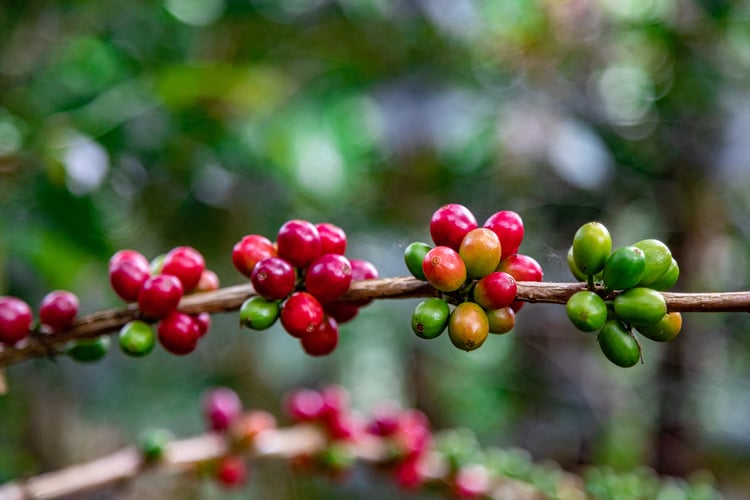
At the same time, coffee was exceptionally expensive in Peru's internal market, and it was also the year when coffee producers ended up deeply in debt. This financial crisis and the 2012 "La Roya" wiped out many farms, leaving farmers without enough money to repay the banks.
In addition, José tells us that they were not aware of the importance of "trade risk management strategies." The first time they heard about it was at one of our events in Peru through Albert Scalla, and after that, they started paying attention to it. "There are always new things in which Sustainable Harvest was at the forefront, always showing us the coffee world's dynamics." Some cooperatives weren't initially part of Sustainable Harvest's network. Still, they constantly aimed to be a part of the events because it provided proximity and opportunities in the market, facilitating business transactions and helping us understand what was happening on the other side of the world," José mentioned.
Over the years, the coffee industry in Peru has evolved. Now, as José tells us, they sell coffee from different qualities, "we sell micro-lots, nano-lots, and coffee with stories, we learned the importance of sharing those stories," and he explained how even though different challenges have marked the Peruvian industry, they have learned, adapted, and grown.
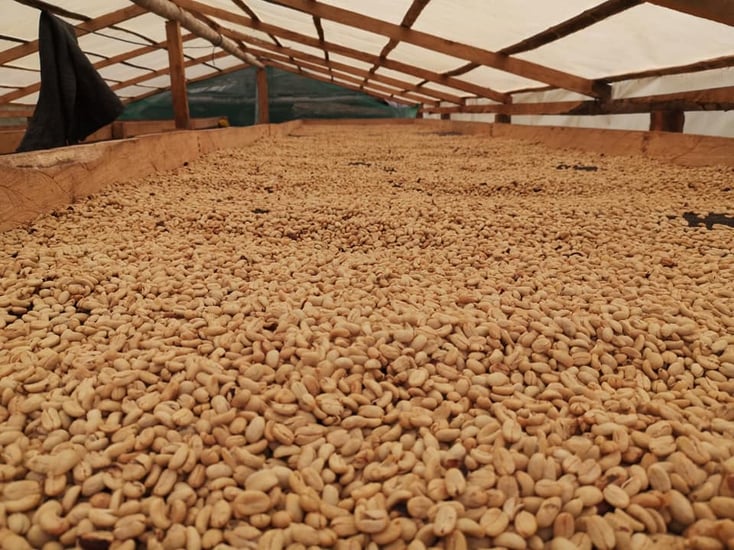
A Young Cooperative Born from Challenges
Omar and those who lead the administrative, technical, and logistical aspects at Alonso de Alvarado - also known as CAPAA - live in a district known for its incredible coffee in the San Martín region. Before founding CAPAA, this region was known for a coffee competition showcasing its high-quality coffees.
However, this potential didn't translate into improved living conditions for producers or increasing sales, so that's when Omar and his partners - a group of friends and neighbors at that time - decided to take action, intending to help producers export their coffee, finding new customers, showcasing quality, and demonstrating the hard work of smallholder producers in the area.
In 2020, this group, with approximately 242 producers, began the journey towards gaining the Organic and Fairtrade certifications. They started selling their first coffees and making their first exports; producers became motivated and got a fair price for their coffee. Omar explained how the primary focus was to strengthen its social foundation during the first three years - this foundation was their producers. They aimed to compensate them with good prices, generate more market opportunities, and boost sales.
Omar sees motivating producers as one of CAPAA's main goals, as 80% of their producers fall in the 18 to 35 age range, and they want them to see coffee as a profitable activity, something they can grow with and make a future for themselves and their families.
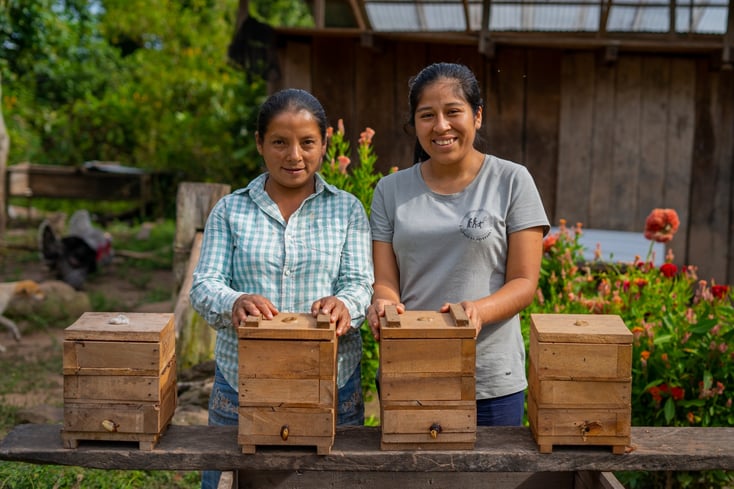
Sustainability, a Tool for Growth
Both José and Omar focus on sustainability as a key tool for the growth of their cooperatives and the coffee sector in general; both organizations focus on environmental and social aspects.
José tells us how producers are what keep the cooperative alive in every sense, "nurturing our relationship with our members is the most crucial thing we could have. I mean, the cooperative functions because the members are at the core of it," explaining how in every case, the producers come first, as the owners of the cooperative are the members themselves. He explained how when they attend a general assembly, they can decide the cooperative's course of action. Members are integral to the cooperative; "If we neglect our members, we essentially vanish."
They have developed different programs to improve the livelihoods of their members. They have a Food Security program, where cooperative members are actively involved. They have implemented a small local market with the support of a client who helped them with infrastructure. Now, they have a space where members and even non-members who cultivate different vegetables can sell their produce, giving them an extra source of income.
In addition, they have built a library with the coffee premiums and a Japanese client's support. They have a Peruvian and Japanese literature collection and are also developing an "education center" to prepare young people for technical institutes and universities.
Casil is also thinking about opening a coffee school. "I dream that within the next 20 years, we can cultivate knowledge in children and young people attending institutes and universities. I hope they return to coffee farming because we face a labor shortage and a lack of people willing to work in the field every year. It's concerning, perhaps not so much for us now, but for future generations," José tells us and explains how they currently offer classes to prepare young people around coffee cupping and physical analysis. They have invested in a training center that they hope to grow.
They are also working on a mapping project that will involve implementing agroforestry systems on the producers' farms and land that has yet to be used for coffee cultivation.
.jpeg?width=734&height=551&name=Laboratorio%20Casil%202%20(1).jpeg)
At CAPAA, one focus is avoiding soil and river pollution, not only because of regulations or market demands but also because they are now aware of the importance of preserving the environment for healthy production.
Two years ago, while on a commercial tour in Europe, Omar first learned about the focus and importance of environmentally related work, "I thought, "Hey, I need to dig deeper into this," and I started asking questions to the Rainforest Alliance and organic certification authorities. "It was clear that you need to meet certain criteria or specific map polygons," he mentioned, so he decided to, in addition to providing even more traceability to his customers, "not just traceability with a list of producers, but information that allows customers access the producer's details or learn where the coffee is coming from."
Last year, they started creating map polygons for more than 300 producers in collaboration with a local project, which allocated an additional technical professional to the cooperative. This technical professional is responsible for completing the polygonization of all their farms. This investment allows CAPAA to share the polygonization of all the producers that make up a coffee lot in a container, "we deliver the polygons in PDF format, along with clear and practical presentations for our customers," Omar mentioned. This way, their customers can know precisely where their coffee is coming from and see if they meet the new deforestation criteria.
Besides focusing on environmental sustainability, Omar tells us they have also created learning and financial education programs for CAPAA's members. "These groups function like small banks and are managed and directed by the producers," he explained, helping them have a better tool to manage their money and have savings. In addition, they are working on a women's program, along with an ONG, to empower women producers, encourage them to be part of different projects, and even develop their own brand of fertilizer as an additional income.
Both cooperatives aim to keep growing, not only in sales and market access but also in structure, having more programs that can benefit their producers, community, and environment, as well as to keep providing exceptional coffee to their clients and reach new markets.
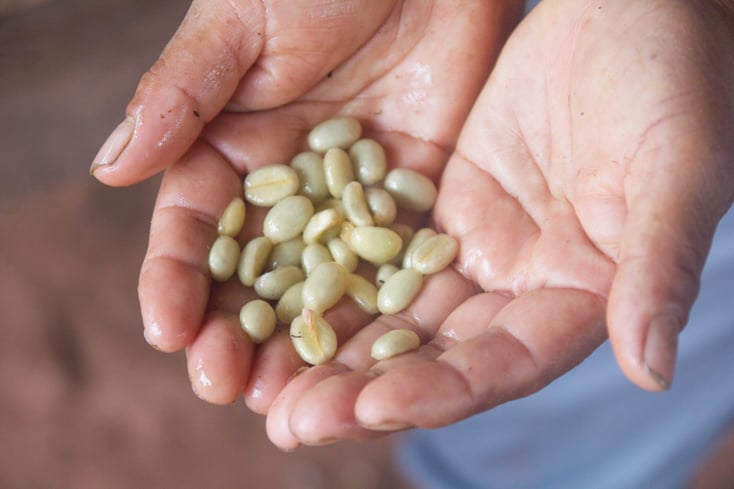
The Importance of Relationships
Since 2022, Peru has faced numerous challenges, from heavy rains and cold weather patterns to the rising cost of living, leading some producers to contemplate abandoning their coffee fields. On top of these issues, the country's complex political and social climate has impacted logistical and shipping operations.
Despite all this, José emphasizes the importance of customer relationships during tough times. "Direct relationships work, and having close intermediaries also helps growers thrive. When the grower succeeds, the organization, the importer, and the roaster also grow," he explains. "We understand that the business thrives when everyone is winning," and he believes that transparency is critical for the relationships to work.
Omar considers that building solid relationships is a crucial factor for stability. Like José, he sees transparency as a vital and fundamental aspect of their organization and integral to building trust with their customers and strengthening their business.
________________________________________________
We have learned from two generations of coffee professionals how Peru has worked towards overcoming different challenges and is committed to embracing sustainability.
José and Omar remind us that not only cooperatives work to improve the quality of their coffee sector but also the well-being of their communities and the environment. We have seen firsthand the evolution of Peru's coffee industry and are bullish on its continued growth and strength in the specialty coffee industry for years to come.
If you want to explore some of our incredible Peruvian offerings or pre-book some beans from these cooperatives, reach out to your Relationship Coffee Manager!



.png)
